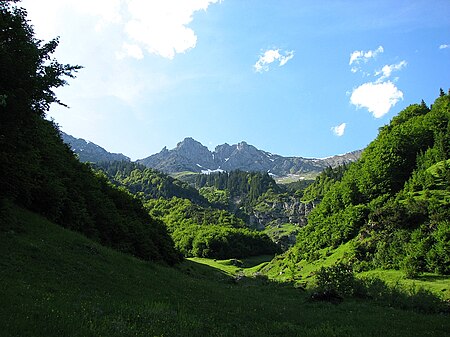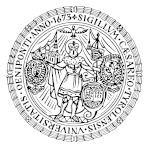Höttinger Bach

The Höttinger Bach is a river of Tyrol, Austria. It is a 4 km (2.5 mi) long left tributary of the Inn in Innsbruck and lies in full on the Innsbruck city area. The Höttinger Bach originates on 1,100 m (AA) below the Umbrückler Alm and runs straight in southern direction to the city district Mariahilf where it merges with theInn. In the course of time it created a small ravine called Höttinger Graben. The overground part is visible until the street Kirschentalgasse. Near its origin the city erected a drinking water reservoir, which mainly supplies the Hungerburg region additionally. Its excellent A grade quality is kept by the river in the whole course. The small river may look like a harmless water but can quickly get flooded due to high water or strong rain. Hötting had to suffer from this already several times.
Excerpt from the Wikipedia article Höttinger Bach (License: CC BY-SA 3.0, Authors, Images).Höttinger Bach
Arthur-Haidl-Promenade, Innsbruck
Geographical coordinates (GPS) Address Nearby Places Show on map
Geographical coordinates (GPS)
| Latitude | Longitude |
|---|---|
| N 47.2675 ° | E 11.3878 ° |
Address
Mariahilfpark
Arthur-Haidl-Promenade
6020 Innsbruck (Innsbruck)
Tyrol, Austria
Open on Google Maps






